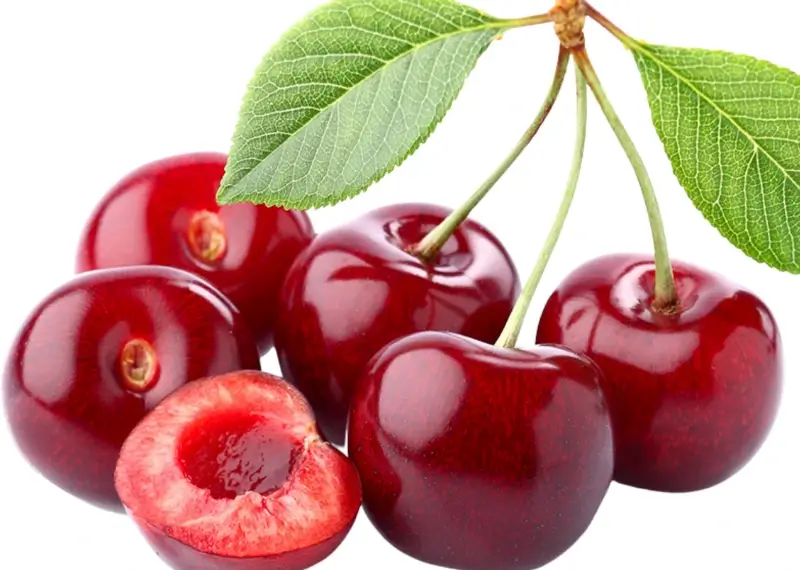Can Dogs Eat Cherries? The Complete Safety Guide Every Dog Owner Needs
Picture this: you’re enjoying a bowl of sweet, juicy cherries on a sunny afternoon when your furry best friend gives you those irresistible puppy dog eyes. Before you toss them a cherry, stop right there! While your intentions are pure love, this seemingly innocent fruit could put your beloved pup in danger.
Table of Contents
The short answer? Dogs can technically eat cherries, but only under very specific conditions. The cherry flesh itself isn’t toxic, but the pits, stems, and leaves contain compounds that can be deadly to our four-legged friends. Let’s dive deep into everything you need to know about dogs and cherries.
The Hidden Dangers Lurking in Cherries
When it comes to cherries and dogs, the devil is truly in the details. The biggest threat comes from cyanide poisoning, which sounds as scary as it actually is. Cherry pits, stems, and leaves contain a compound called amygdalin. When your dog chews on these parts, amygdalin breaks down and releases hydrogen cyanide into their system.
This isn’t just a minor stomach upset we’re talking about. Cyanide poisoning can cause severe symptoms, including excessive panting, difficulty breathing, bright red gums, dilated pupils, and, in worst-case scenarios, collapse or even death. The smaller your dog, the more dangerous even a single pit becomes.
But that’s not all. Whole cherries present serious choking hazards and intestinal blockage risks. A cherry pit can easily get lodged in your dog’s throat or digestive tract, requiring emergency surgery to remove it. Even if your dog manages to swallow it, the pit can cause painful blockages that prevent normal digestion.
The high sugar content in cherries also poses problems for dogs with diabetes, obesity, or sensitive stomachs. Too many cherries can trigger diarrhea, vomiting, and other gastrointestinal distress that’ll leave both you and your pup miserable.

The Surprising Benefits of Cherry Flesh (When Prepared Safely)
Despite all the scary warnings, there’s actually some good news hidden in this story. When properly prepared – meaning completely pitted and given in tiny amounts – cherry flesh does offer some genuine health benefits for dogs.
Cherries are packed with powerful antioxidants and vitamin C that help fight inflammation and support your dog’s immune system. These same compounds promote cellular repair and may help your furry friend maintain better overall health as they age.
The natural fiber in cherries can aid digestion and support gut health, while the high water content provides extra hydration – especially welcome on hot summer days. Cherries are also relatively low in calories and fat, making them a better treat option than many commercial dog snacks.
Here’s something interesting: cherries contain natural melatonin, which might help support healthy sleep patterns in dogs. While more research is needed, this could be particularly beneficial for anxious dogs or those with sleep disruption issues.
Warning Signs Every Dog Owner Must Recognize
If you suspect your dog has eaten cherry pits or stems, time is critical. Cherry poisoning symptoms can develop quickly, and early intervention can mean the difference between a full recovery and a tragic outcome.
Watch for these emergency warning signs:
- Excessive panting or difficulty breathing
- Bright red or pale gums
- Dilated pupils that don’t respond to light
- Abdominal pain or bloating
- Vomiting or diarrhea
- Loss of coordination or weakness
- Convulsions or seizures
- Collapse or unconsciousness
If you notice any of these symptoms, contact your veterinarian or an emergency animal hospital immediately. Don’t wait to see if symptoms improve – cyanide poisoning requires professional medical treatment.
Safe Feeding Guidelines: When and How Much
If you’re determined to share cherries with your dog, here’s exactly how to do it safely. First and foremost, never give your dog whole cherries. Always remove the pit, stem, and any leaves completely. Wash the cherry thoroughly to remove any pesticide residues.
For small dogs (under 20 pounds), limit treats to just one or two small pieces of cherry flesh occasionally. Medium dogs (20-60 pounds) can handle slightly more, but still keep it to just a few pieces. Large dogs (over 60 pounds) might be able to enjoy a bit more, but moderation is still key.
Never feed cherries to dogs with diabetes, obesity, or known digestive sensitivities. The natural sugars can worsen these conditions and cause unnecessary health complications.
Remember, treats should never make up more than 10% of your dog’s daily caloric intake. Cherries should be an occasional special treat, not a regular part of their diet.
Better Alternatives: Safer Fruits Your Dog Will Love
With all the risks involved, consider safer fruit alternatives that provide similar benefits without the dangers. Blueberries are packed with antioxidants and are perfectly safe for dogs in reasonable amounts.
Bananas offer potassium and natural sweetness that most dogs adore, while apple slices (without seeds or core) provide fiber and vitamins. Cantaloupe and watermelon (seedless) are excellent hydrating treats during hot weather.
These alternatives give you peace of mind while allowing you to share healthy, delicious treats with your furry companion.
Cherry Safety Comparison Table
Safety Factor | Cherry Flesh (Pitted) | Whole Cherries | Alternative Fruits |
Toxicity Risk | Low (when prepared properly) | High (cyanide in pits) | Very Low |
Choking Hazard | Low | Very High | Low |
Intestinal Blockage | Very Low | High | Very Low |
Sugar Content | Moderate | Moderate | Varies (generally lower) |
Preparation Required | Extensive (pit removal) | Dangerous without prep | Minimal |
Vet Recommendation | Occasional treat only | Not recommended | Generally safe |
Emergency Risk | Low | High | Very Low |
Conclusion
While the cherry question isn’t black and white, the safest approach is clear: cherries are generally not worth the risk for most dogs. The potential for cyanide poisoning, choking, and intestinal blockage far outweighs any nutritional benefits you might provide.
If you do choose to offer cherry flesh to your dog, extreme caution is essential. Remove every trace of pit, stem, and leaf, limit quantities to tiny amounts, and never make it a regular treat. Always supervise your dog when trying any new food, and keep your veterinarian’s emergency contact information readily available.
Remember, there are plenty of safer fruit options that your dog will enjoy just as much without putting their health at risk. When in doubt, stick with dog-approved treats and consult your veterinarian about the best dietary choices for your specific pet.
Your dog’s safety and health should always come first – and sometimes the best way to show love is knowing when to say no to those pleading puppy eyes.
Frequently Asked Questions
Are cherries safe for dogs to eat?
Cherries are safe only if their pits, stems, and leaves are completely removed. The fleshy fruit can be given occasionally, but it is generally safer to avoid cherries due to potential risks.
What are the signs of cherry poisoning in dogs?
Signs include excessive panting, difficulty breathing, abdominal pain, bright red gums, dilated pupils, convulsions, and collapse. Immediate veterinary help is crucial if poisoning is suspected.
Can small dogs eat cherries?
Small dogs are at higher risk from choking and poisoning due to their size. They should not be given whole cherries or cherries with pits.
How many cherries can I safely give my dog?
Only a few pitted pieces should be given as an occasional treat. Too many cherries can cause digestive upset or other complications.








